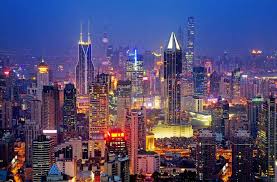
Exploring the Diverse Tapestry of Global Cities
The Vibrant World of Cities
Cities are more than just buildings and streets; they are living, breathing entities that pulsate with energy and diversity. From the towering skyscrapers of New York City to the bustling markets of Mumbai, cities around the world are hubs of culture, innovation, and human connection.
One of the most fascinating aspects of cities is their ability to bring together people from all walks of life. In a city, you can find individuals with different backgrounds, beliefs, and dreams coexisting in a vibrant tapestry of humanity. This diversity is not only enriching but also essential for fostering creativity and progress.
Moreover, cities serve as epicenters of innovation and opportunity. They attract bright minds and talented individuals who come together to collaborate, create, and push boundaries. Whether it’s Silicon Valley leading the tech revolution or Paris inspiring artists for centuries, cities have always been at the forefront of change and advancement.
But amidst the hustle and bustle of urban life, cities also face challenges. Issues such as overcrowding, pollution, inequality, and crime can plague even the most thriving metropolises. However, it is often in overcoming these challenges that cities reveal their true strength – resilience.
Ultimately, cities are like living organisms – constantly evolving, adapting, and shaping the world around them. They hold within their streets stories of triumph and struggle, moments of joy and sorrow. Each city has its own unique character and charm that draws people in and leaves a lasting impression.
So next time you find yourself wandering through a cityscape or gazing at a skyline dotted with lights, take a moment to appreciate the intricate tapestry that is a city – a place where dreams are born, cultures collide, and possibilities abound.
Six Compelling Advantages of City Living: Embracing Diversity, Opportunity, and Vibrant Urban Life
- 1. Cultural Diversity
- 2. Opportunities
- 3. Entertainment Options
- 4. Connectivity
- 5. Social Interaction
- 6. Infrastructure
Four Major Downsides of Urban Living: Traffic, Cost, Noise, and Crime
- Traffic congestion can lead to long commutes and increased stress levels.
- High cost of living, including expensive housing prices and daily expenses.
- Noise pollution from traffic, construction, and urban activities can be disruptive.
- Increased crime rates in densely populated urban areas may impact safety.
1. Cultural Diversity
Cities are vibrant hubs of cultural diversity, where a multitude of traditions, languages, and cuisines converge to create a rich tapestry of experiences. From bustling Chinatowns to colorful street festivals celebrating various heritage, cities offer a unique opportunity to immerse oneself in different cultures without leaving their urban confines. This diversity not only enriches the social fabric of cities but also fosters understanding, tolerance, and appreciation for the multitude of perspectives that exist in our interconnected world.
2. Opportunities
Urban areas offer a wealth of opportunities for individuals seeking job advancement, education, and career development. With a diverse range of industries and businesses concentrated in cities, job seekers have access to a multitude of employment options that cater to various skill sets and interests. Additionally, urban centers are home to prestigious educational institutions and training facilities, providing individuals with the chance to enhance their knowledge and skills. The dynamic environment of cities fosters innovation and entrepreneurship, creating abundant prospects for professional growth and advancement. Overall, cities serve as fertile grounds for individuals looking to thrive in their careers and pursue their aspirations.
3. Entertainment Options
Cities are vibrant hubs of entertainment, offering a plethora of options for both residents and visitors to indulge in. From world-class theaters showcasing the latest productions to museums housing priceless artworks and historical artifacts, cities cater to diverse interests and passions. Additionally, the culinary scene in cities is a culinary delight, with a wide array of restaurants serving up flavors from around the globe. And when the sun sets, cities come alive with bustling nightlife options, including bars, clubs, and live music venues. With endless entertainment choices at every turn, cities ensure that there is never a dull moment for those seeking fun and excitement.
4. Connectivity
Cities offer a significant advantage in terms of connectivity. With well-established transportation systems and efficient networks, urban areas serve as vital hubs that facilitate seamless travel both within the city and to neighboring regions. Whether it’s through extensive subway lines, bus routes, bike-sharing programs, or highways, cities provide residents and visitors with convenient access to various destinations. This connectivity not only enhances mobility within the city but also promotes economic growth, cultural exchange, and collaboration on a broader scale.
5. Social Interaction
Living in a city offers the distinct advantage of enhanced social interaction. The bustling urban environment provides ample opportunities for connecting with a diverse range of individuals, fostering networking prospects, and engaging with the community on various levels. Whether it’s through neighborhood gatherings, cultural events, or professional meet-ups, cities serve as vibrant hubs where people can easily come together to exchange ideas, build relationships, and contribute to the social fabric of their surroundings. The rich tapestry of social interactions in cities not only enriches personal experiences but also fuels collaboration and collective growth within the community.
6. Infrastructure
Urban areas offer a significant advantage in terms of infrastructure development. Cities are known for their well-established healthcare facilities, educational institutions, recreational parks, and efficient public services. This robust infrastructure not only enhances the quality of life for residents but also contributes to the overall well-being and convenience of city dwellers. Access to essential services and amenities in urban areas plays a crucial role in shaping a sustainable and thriving community, making cities attractive hubs for individuals seeking a high standard of living.
Traffic congestion can lead to long commutes and increased stress levels.
Traffic congestion in cities is a significant drawback that can result in prolonged commutes and heightened stress levels for residents. The gridlock of vehicles on congested roads not only leads to wasted time sitting in traffic but also contributes to increased frustration and anxiety among commuters. Long hours spent navigating through traffic jams can take a toll on mental well-being, impacting productivity and overall quality of life. The constant battle with congestion adds an extra layer of challenge to city living, highlighting the need for sustainable urban planning and efficient transportation systems to alleviate this common con of city life.
High cost of living, including expensive housing prices and daily expenses.
The high cost of living in cities, characterized by exorbitant housing prices and daily expenses, poses a significant challenge for residents. Skyrocketing rents and property values make it increasingly difficult for individuals and families to afford decent housing, forcing many to either stretch their budgets thin or seek alternative living arrangements. Coupled with steep everyday expenses such as groceries, transportation, and healthcare, the financial burden of city living can create barriers to economic stability and quality of life for a large segment of the population. The disparity between income levels and the cost of basic necessities further exacerbates inequality within urban communities, highlighting the pressing need for affordable housing solutions and support systems to address this pervasive issue.
Noise pollution from traffic, construction, and urban activities can be disruptive.
Noise pollution from traffic, construction, and urban activities poses a significant con of cities. The incessant hum of vehicles, the clanging of construction machinery, and the cacophony of urban life can be highly disruptive to residents and visitors alike. This constant barrage of noise not only affects people’s quality of life by causing stress and sleep disturbances but also has detrimental effects on physical health, such as hearing loss and increased risk of cardiovascular diseases. Finding ways to mitigate and manage noise pollution in cities is crucial to creating more livable and sustainable urban environments for all.
Increased crime rates in densely populated urban areas may impact safety.
Increased crime rates in densely populated urban areas pose a significant con of city living as they can have a direct impact on safety. The proximity of people in crowded cities can create opportunities for criminal activities to occur more frequently, leading to concerns about personal security and property safety. This heightened risk of crime can instill fear among residents and visitors, affecting their quality of life and sense of well-being. Addressing and managing crime rates in urban areas is crucial to ensuring that cities remain safe and welcoming environments for all individuals.









-
Tagged analysis, bridge gaps, comprehensive news coverage, coverage, dialogue